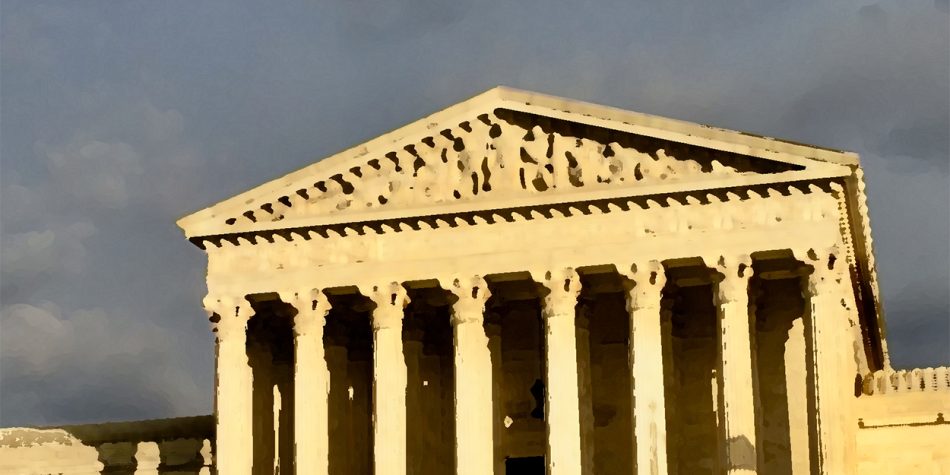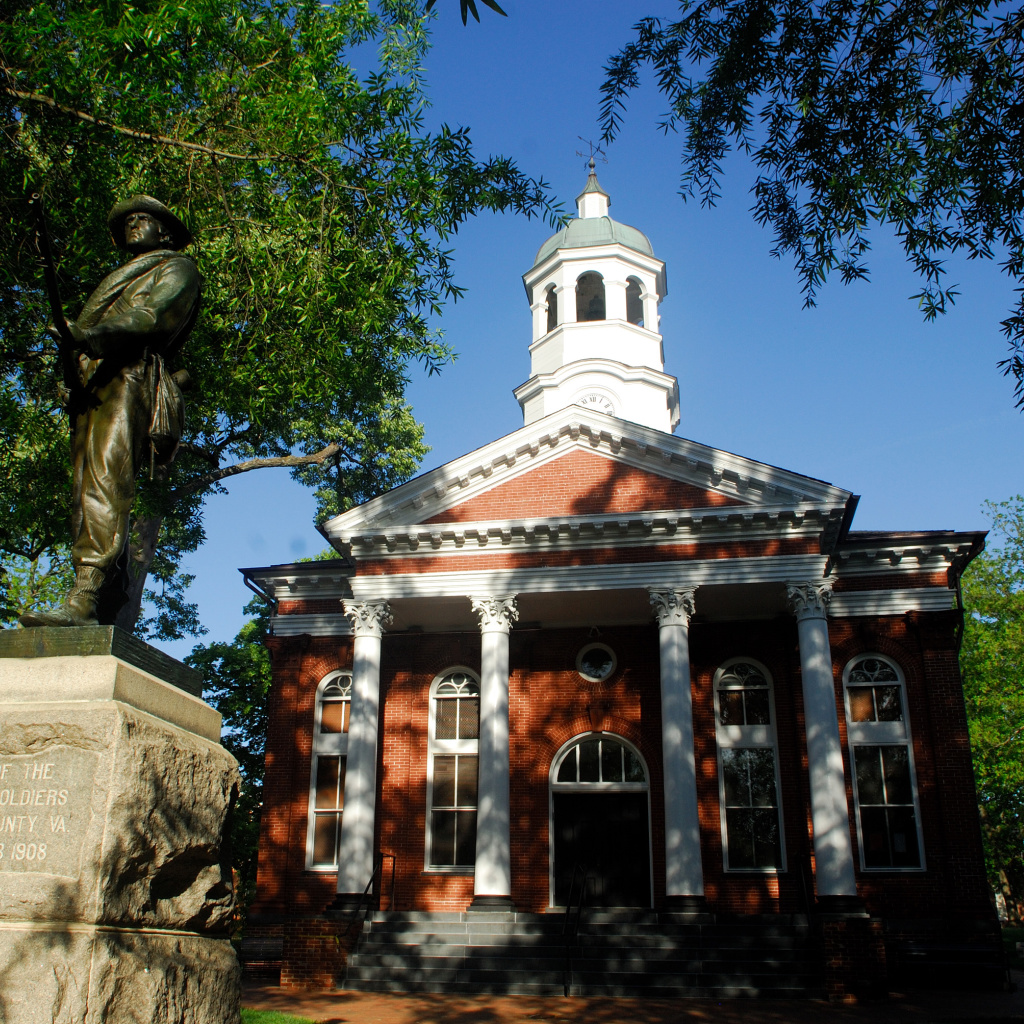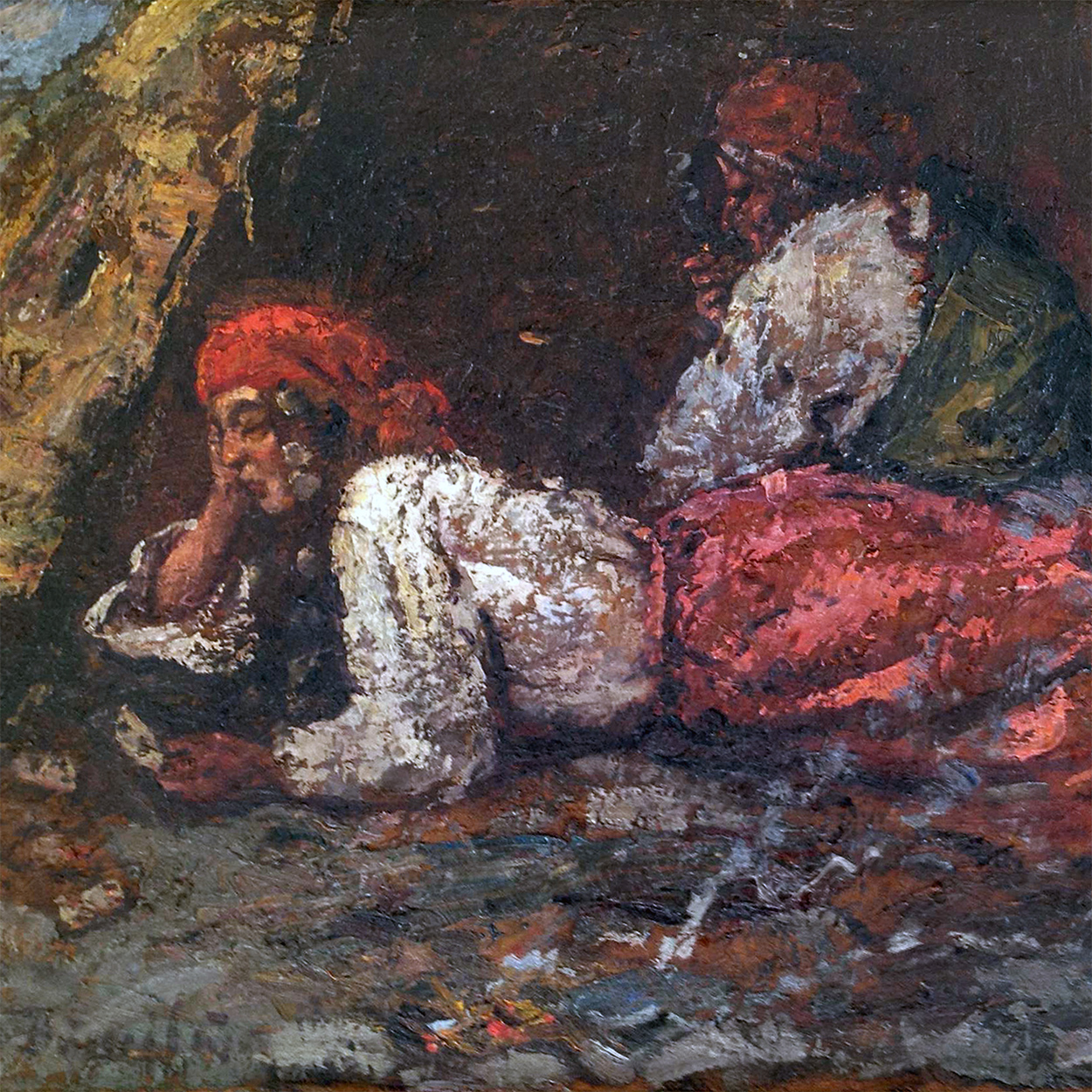At the end of her first term on the Supreme Court in the summer of 1994, Ruth Bader Ginsburg and Antonin Scalia visited the country of India.
They first became friends in the early 80’s while serving on the US Appeals Court in D.C., and bonded over their shared love of opera. This trip was to visit with members of India’s Supreme Court.
Their driver took them to the carpet shop of one of his friends. As the shopkeeper threw one carpet on the floor after the next, Scalia identified exactly the design he wanted. And in the end Ginsburg settled on the same design, just in a different color.

There may be no better description of these two lions of the Supreme Court (one now deceased): same design—different color.
While their friendship often seemed baffling—what Heidi Weaver would call a “treasonous friendship”—in Ginsburg’s own words it also seemed entirely natural. She admired his shopping ability, talent for making others laugh, intelligence, and high spirits. While Scalia admired her approach to constructive criticism, her seriousness (frequently comparing her to Queen Victoria) and their shared interest in kibitzing those they worked with.
And perhaps most importantly they were “one in [their] reverence for the Court and its place in the U.S. system of governance.”
The primary thing that made them so different was their “interpretation of written texts.”
When you put it that way, letting something like one’s approach to literary interpretation get in the way of a good friendship does sound a bit silly.
Which is not to deny the seriousness of their work before the Supreme Court, which should be debated vigorously and with passion. But their commitment to something else beneath the disagreement is inspiring. Could you imagine a similar sincere friendship between President Trump and Nancy Pelosi?
It’s not just our politicians that let politics get in the way of friendship. Increasingly, Americans of all stripes are eschewing friendships with those from other political parties.
And at the very time in which the Supreme Court threatens to become yet another flashpoint of knee-jerk partisanship, Ginsburg and Scalia’s famous friendship demonstrates something else: that the Supreme Court itself may often model a better way forward for our society—namely, to hold space for and seek to make thoughtful, good-faith efforts to work through difficult issues without forfeiting our collegiality or the bond of our nation’s shared purpose.
Letting one’s approach to literary interpretation get in the way of a good friendship does sound a bit silly.
And Ginsburg and Scalia are hardly the only example.
According to John Paul Stevens, the spirit of collegiality began to develop more robustly on the court with the ascension of William Rehnquist as the Chief Justice in 1986. (Rehnquist and Stevens were similarly on opposite sides of the courts’ ideological divide.)
Stevens tells the story of starting his work week every fall by settling the one dollar bets he and Rehnquist made on that weekend’s football games. Or William Brennan bringing a long-tailed tuxedo to Stevens’ office to convince him to become more social in Washington D.C.
Stevens, who would speak after both William Rehnquist and William Brennan when the justices deliberated, would delight in teasing his colleagues by opening his remarks with “I agree with Bill,” leaving them in suspense as he explained which Bill he agreed with.
This new spirit of collegiality seems to be taking hold for another generation of justices as Slate has identified Justices Elena Kagan and Samuel Alito as the newest “frenemies,” sharing a story of Kagan taking joy in trying to get Alito to break out laughing during oral arguments.
Ginsburg herself engendered the wrath of many for standing up for Brett Kavanaugh as a “very decent man.”
To be sure, the Supreme Court has many advantages in building these kinds of relationships that the other branches of government or society at large do not share. The Justices all share very similar educational and career paths. And they have the luxury of sending the most contentious issues back into the maw of democracy without having to debate them.
Yet there are also many things not exclusive to their lives, and arguably much the court could teach normal Americans.
At the beginning of each day in the court, every single justice shakes the hand of every other justice. And on every day that they hear cases, they have lunch together. By tradition they eat the food available from the Court’s public cafeteria.
They sing Happy Birthday to each other on one another’s birthdays, and they all attend the annual Shakespeare Theatre Company together, putting a famous character of drama on trial. They also pass out candy at Halloween and sing carols during the holidays.
In addition to these newer habits, the Court also upholds certain traditions that have lasted centuries, such as providing a white quill to each lawyer who advocates before them and wearing black robes. So many of these traditions still exist that it has been observed the Supreme Court today is merely “the first court still sitting.”
This maintenance of traditions is a striking contrast to the shrinking of similar traditions in Congress (where members associate far less when not in session than they used to).
And we could hardly understate the importance of humor to the justices. The most recently appointed justice has the job of pouring coffee for the other justices. Stephen Breyer had the job for ten years during a stable period for the court. When Elena Kagan was appointed, Breyer asked Scalia, “I’ve gotten pretty good at this, haven’t I?” Scalia dryly replied, “No, you haven’t.”
A recreational basketball court on the top floor, meanwhile, has been dubbed, “The highest Court in the land.”
As you might expect, the tangible effect of these traditions for the justices is not insignificant – as warm relationships develop, along with humility toward the institution and work.
True, the justices are exceptionally critical of each other’s thinking and conclusions, to the point that one popular court observer has dubbed the interactions “Benchslaps.” These criticisms, however, are limited to the words on the page.
Too many of us have chosen a short cut, conflating shared beliefs with strong character.
Antonin Scalia, famous for his biting criticisms, once said, “I attack ideas. I don’t attack people. . . . And if you can’t separate the two, you gotta get another day job.”
Perhaps most importantly, the justices recognized a shared goal. Ginsburg tells a story where she and Scalia were writing on opposite sides of a case. They were nearing the end of the term, and he had finished the first draft of his dissent. It wasn’t ready to share, but he gave it to Ginsburg, so she would have the time to respond best to his criticisms. She said, “He absolutely ruined my weekend, but my opinion is ever so much better because of his stinging dissent.”
Court observer Nina Totenberg said, “They liked to fight things out in good spirit—in fair spirit—not the way we see debates these days on television.”
This reflects what scholar Randall Charles Paul likes to call “trustworthy rivalry”— something arguably at the heart of the American experiment. As Eric Liu, founder of Citizen University suggests, “the point of American civic life, in the end, is to argue…because America is an argument [between liberty and equality, color-blind, and color-conscious views of the constitution, pluribus and unum, individual responsibility and collective responsibility, etc.].”
How to preserve and continue cultivating this space of healthy disagreement is crucial to our path forward as a country. That being said, recognizing strong character in the lives of our political opposites can be difficult work. Too many of us have chosen a short cut, conflating shared beliefs with strong character.
The justices of the Supreme Court have withstood that temptation with surprising frequency. And their consistent humanizing traditions effectively prevent the court from descending into the bickering morass that we find in Congress and in so many other corners of public life.
Could the same be true of us? Last year, in an article called “There Should Be More Rituals!” David Brooks called more attention to what he called the “social architecture” of small moments that help us pause, celebrate, and bond across our differences. And in many years of work at Citizen University, Eric Liu has emphasized the importance of secular community rituals of connection and community engagement that make up what he calls “civic religion.”
What more can we do to incorporate moments of celebration, pause, and bonding in our own community interaction (and not just with the people who look or think like us)? In reflecting on how much Congress has changed since she was appointed to the court, Ginsburg said, “my hope and expectation is that we will get back to that kind of bipartisan spirit.”
May her hope materialize not just in the halls of government but throughout America’s expanse of precious public square.


















